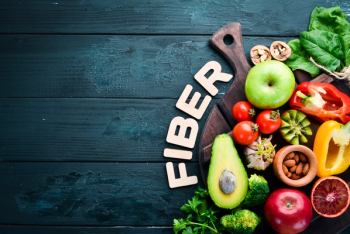
- Nutritional Outlook Vol. 17 No. 1
- Volume 17
- Issue 1
Is Chia the New Quinoa?
Although chia’s market is much less established than quinoa’s, chia is now showing even higher rates of growth. Innova Market Insights reports.
“Ancient grains” are standing tall. These grains were once very popular basic food cereals, but faded away and became largely obsolete in many countries with the rise of modern cereal crops such as wheat and corn. But their resurgence, especially in the past few years, reflects rising levels of interest in alternative grain products that are positioned as traditional, natural, and nutritious. The United States now leads ancient grain demand, although launches are also increasingly common in Europe.
Quinoa is still driving category growth, according to
Chia is a Latin American annual herb high in protein, fiber, and antioxidants. Its oil is rich in omega-3 fatty acids. Although chia’s market is much less established than quinoa’s, chia is now showing even higher rates of growth.
Globally, chia product launches rose from barely three figures five years ago to well over 600 now, with the number of launches more than 20% higher in 2013 over 2012. The United States dominated launch activity, accounting for nearly 45% of total introductions. (In 2008, U.S. launches accounted for only 20% of the total.) Europe comes in second, with 17.5% of total launch activity, ahead of Asia’s 11.5% and the 10.5% of chia’s home market, Latin America.
Chia launches span a range of categories, led, as one might expect, by cereal products. Breakfast cereals and cereal bars accounted for over one-fifth of total chia launches. Activity was also strong in bakery products (12% of the total), followed by supplements with 11% and sports nutrition lines with 9%. Other sectors seeing relatively high interest are ready meals, sauces and seasonings, dairy products, baby food, and soft drinks.
In the United States, the cereal and snack markets were among the first to see significant mainstream chia usage. Examples include Nature’s Path’s Qi’a “superfood” breakfast cereal made with chia, hemp, and buckwheat, as well as Lesser Evil’s Chia Crisps savory snacks in novel flavors like Crunchy Dill Pickle Zing, Southern Barbeque Hot Dang, Feta & Black Olive Opa, and Jalapeno White Cheddar Pow.
Chia is also growing in soft drinks, particularly in the United States where launches include Ahhmigo’s Chia & Water spring water drinks formulated with chia fiber, omega-3, and protein to keep consumers both “hydrated and satiated.” There is also activity in juice drinks, exemplified by Green Mustache’s Mango Orange, Tropical Twist, Strawberry Banana, and Mixed Berry “super-smoothies.” Each contains one serving of fruit and one serving of vegetables, plus ground chia seeds to add calcium, omega-3 fatty acids, magnesium, and fiber.
Where does chia supply come from? Australia is the main source for products launched in the United States and Europe. But competition is growing from a South American source, Nutrisure, which is currently seeking EFSA approval for chia use in selected food products in Europe.
Australian chia supplier The Chia Company got its own EFSA approval earlier in 2013. Australia chia seeds are now widely used by other countries. In Australia’s own market, 2013 launches included unusual products such as the AntiOx Chia & Quinoa snack bar from Vitality Brands, as well as mainstream products and own-label products such as Woolworth’s Select Chia Sandwich loaf (bread).
In the UK, new product activity is also up, thanks especially to publicity over the UK novel food approval of The Chia Company’s chia seeds. As for UK products, The Chia Company’s own on-the-go Chia Pod breakfast line launched in 2013. The porridge-style, dairy-free, vegan products come in single-serving pots. They contain chia seeds, coconut water, and fruit purees, and are marketed as high in omega-3 and fiber. Other UK launches include a Chia & Coconut Bar from Roo’bar, and Next Generation’s Smooch fruit purees with chia and acerola berries in single-serving pouches with resealable screw caps.
In the dairy sector, recent U.S. launches include Greek yogurt brand Chobani’s Flip Blueberry Power line with chia. Baby food is also including ancient grains. U.S. launches include Plum Organics’ Mighty 4 Essential Nutrition Blends that feature Greek yogurt flavors such as pumpkin–pomegranate–quinoa and purple carrot–blackberry–quinoa. All tout chia as a source of omega-3s.
Ancient grains are returning to consumer diets with rising awareness of their nutritional properties, as well as the unique flavor they can impart to a wide range of food and drink products. Chia is well positioned to lead this trend, as its versatility enables a growing-and dazzling-array of products.
Innova Market Insightsis your source for new-product data. The Innova Database, online at
Articles in this issue
almost 12 years ago
Yes to More Acacia Gumalmost 12 years ago
Ingredient Spotlight: Gingeralmost 12 years ago
Top Tips for Formulating Healthy Beveragesalmost 12 years ago
How to Pick a Dietary Supplement Contract Manufactureralmost 12 years ago
Curbing High Fat, Salt, and Sugar in the Middle Eastalmost 12 years ago
What Are 2014's Biggest Food Ingredient Trends?almost 12 years ago
Cranberries and the Future of UTIsalmost 12 years ago
2014 Dietary Supplement and Food Ingredients to Watchalmost 12 years ago
Plant Protein versus Dairy Protein for Muscle Buildingalmost 12 years ago
Natural Versus Synthetic Ingredient DebateNewsletter
From ingredient science to consumer trends, get the intel you need to stay competitive in the nutrition space—subscribe now to Nutritional Outlook.





